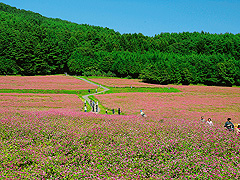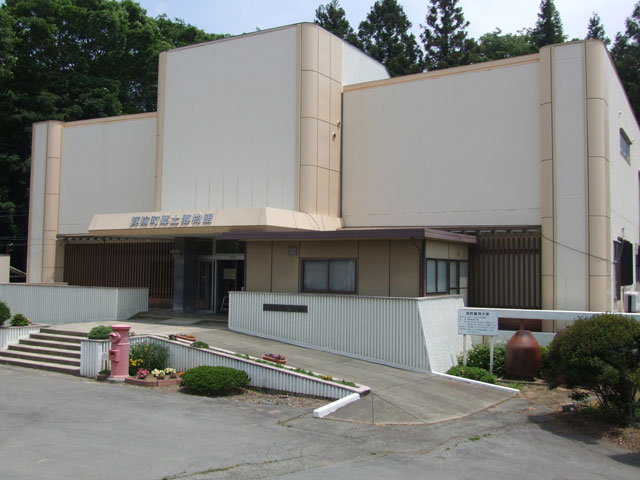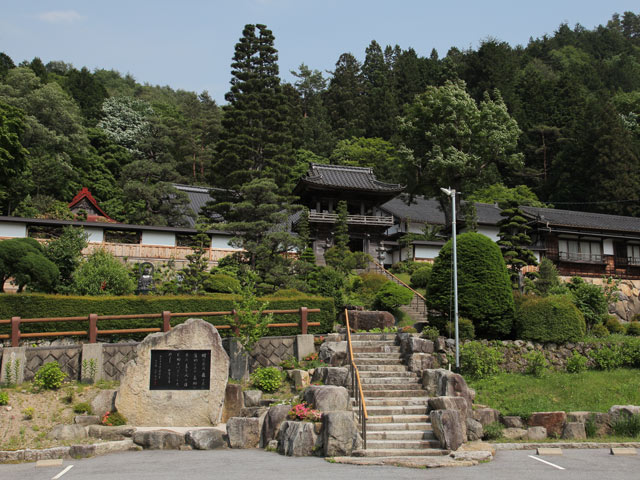
みのわ温泉 ながたの湯
キャンプを中心としたレジャー施設が揃う、ながた自然公園内の日帰り温泉施設。施設は民家風の休憩棟と、蔵造りの浴場棟で構成。いずれもモダンな和風のイメージで統一されている。南アルプスの眺望が楽しめる男女別の浴場は、広々としたサウナ付き大浴場とジェットバス付きの露天風呂。湯上がりには飲食コーナーや休憩室でくつろげる。隣接して宿泊施設もある。
Info
Spot Category
The information provided reflects the details available at the time of the survey.
Please note that facility details may change due to the facility’s circumstances, so please check for the latest information before visiting.
This content has been translated using machine translation.
Information provided by: JTB Publishing
The content uses an automatic translation service, which is not always accurate.
The translated content may be different from the original meaning, so please understand and use it.

キャンプを中心としたレジャー施設が揃う、ながた自然公園内の日帰り温泉施設。施設は民家風の休憩棟と、蔵造りの浴場棟で構成。いずれもモダンな和風のイメージで統一されている。南アルプスの眺望が楽しめる男女別の浴場は、広々としたサウナ付き大浴場とジェットバス付きの露天風呂。湯上がりには飲食コーナーや休憩室でくつろげる。隣接して宿泊施設もある。

赤そば“高嶺ルビー2011”を栽培する規模としては日本最大で、開花時期は9月中旬~10月上旬。標高900mに広がる4.2ヘクタールの赤そば畑。林に囲まれた細い道をぬけると、突如視界が開け、真っ赤なじゅうたんを敷き詰めたような光景が出現する。

郷土の民俗、自然、考古・歴史、美術の4部門で構成され、発掘された考古資料から実際に使われた生活用具、写真、パネル、町にゆかりのある日本画まで、箕輪町の歴史を示すあらゆる資料を展示している。町内の民家から移転・復元された居間では、いろりが置かれ、昭和30年代の様子を再現。前庭には電気機関車のED19-1を展示。内部も見学できる。

An ancient temple of the Rinzai sect, located on a high ground overlooking the townscape. Kaesan was in the year of Meiyo 9 (1500). In Kyoho 10 (1725), the main hall, which was erected by the Hayashi family, includes the Uguisu-tsuku corridor, the Yamaoka Tetsushu flat-profile, and the Owari Tokugawa family's basket. The back of the back [kuri] next to the main hall houses a basket with a car devised by the priest in the Tenpo years. In the shrine under the entrance stone steps, Enmei Jizo, which is said to save women, is celebrated. As the festival approaches in April, the stone gets wet at night due to the temperature difference between day and night. The Honson Yakushi Nyorai was by a Buddhist master, Kiyama, of Gyeongsang 4 (1599). Chubu 49 Yakushi No. 21.

The ancient temple of the Rinzai Myoshin-ji school, which is lined with the main temple and the Jōō-dō and the bell-roomon. It is said to be about 700 years ago, but was rebuilt in Kyoho 11 (1726) after it was destroyed by fire. The gardens are well-maintained, and the flowers of the four seasons add color. The main hall was rebuilt in 2018 for aging.

Natural wood of cypress and cedar thrives on the grounds. The four shrines (important cultural property) of Kumano, Izu, Hakusan, and Zao, which are about 1m away from the side where the bills of the first year of Kenbu (1334) remain inside the Okiya in Ishigaki (Oiya). All of them are considered to be the oldest Kamakura architecture in Nagano Prefecture, which is characterized by the roof of Ichikensha style cypress skin. The entrance with the inscription of 1439 was left behind, indicating that it was the center of the culture of Kiso Valley.
This website uses cookies so that we can provide you with the best user experience possible. Cookie information is stored in your browser and performs functions such as recognising you when you return to our website and helping our team to understand which sections of the website you find most interesting and useful.
Strictly Necessary Cookie should be enabled at all times so that we can save your preferences for cookie settings.
If you disable this cookie, we will not be able to save your preferences. This means that every time you visit this website you will need to enable or disable cookies again.
